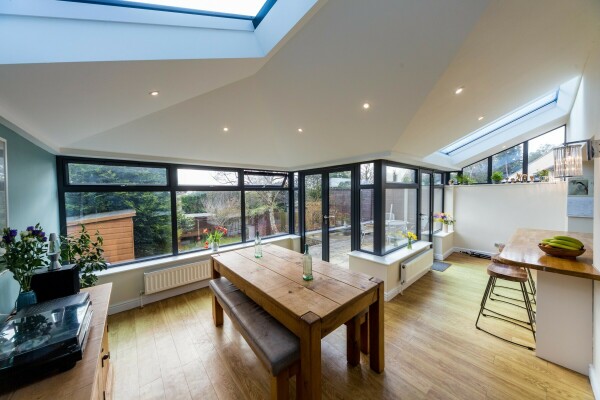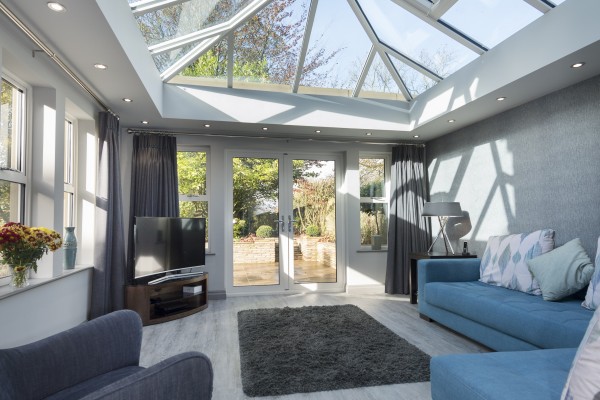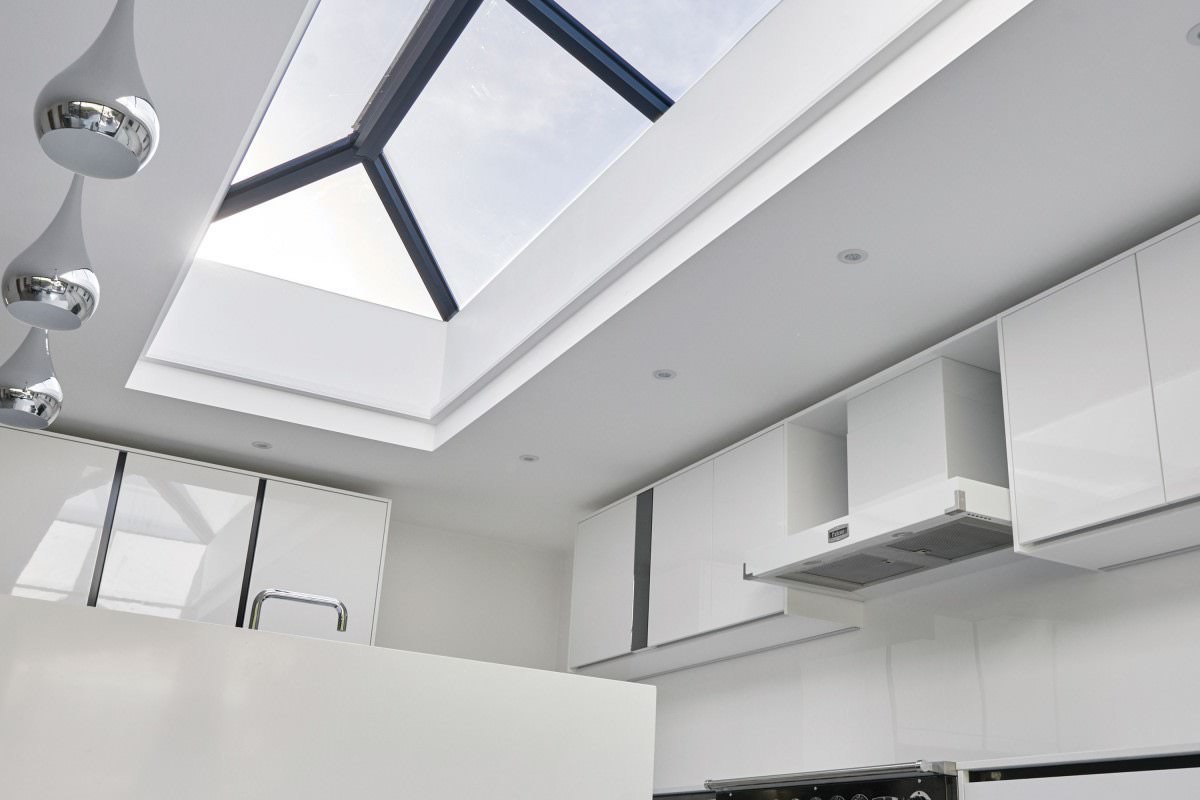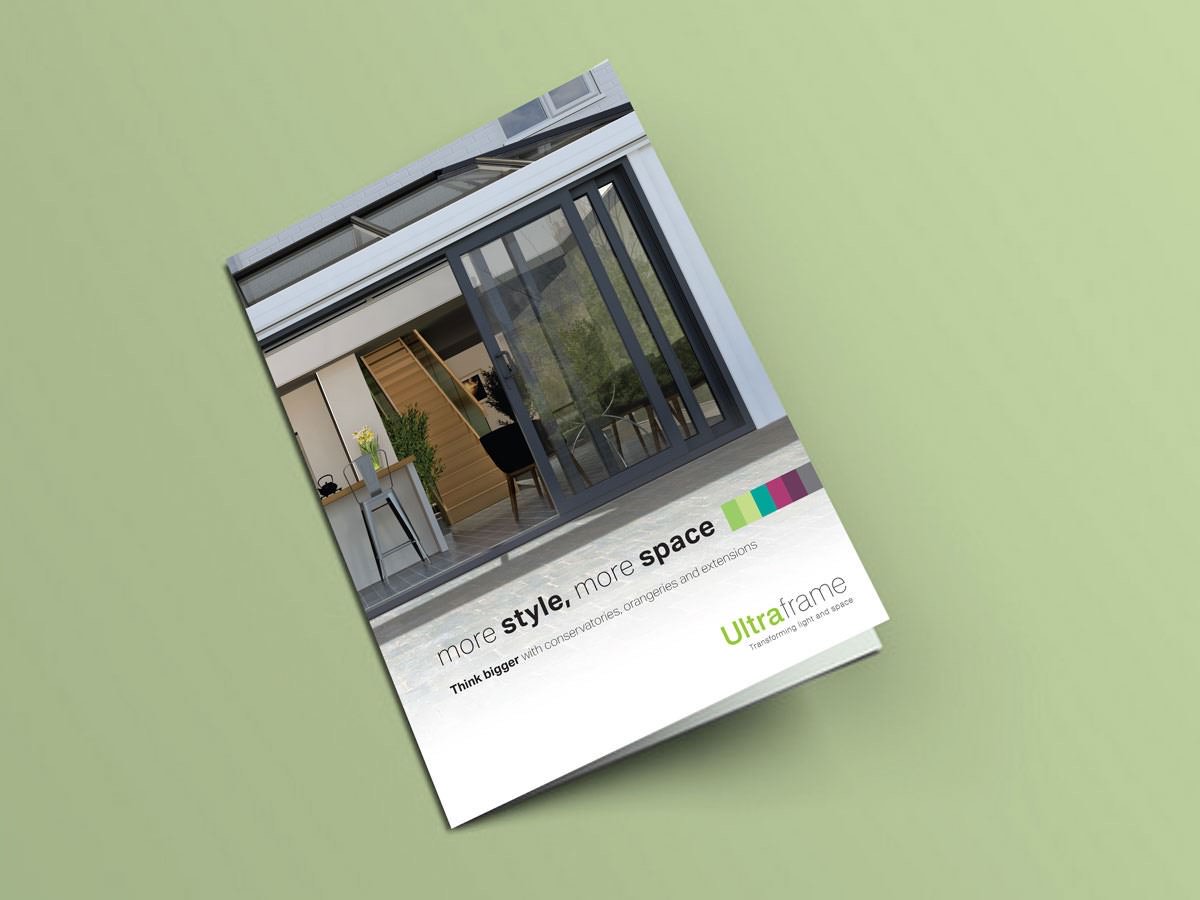There are many factors that accompany maintain your conservatory, from glass cleaning to heating, ventilation to locks and handles, it can sometimes prove to be a daunting task. We have compiled a comprehensive list of conservatory maintenance tips to help break things up for you, allowing you enjoy your home with peace of mind.

Conservatory Maintenance: Condensation
Condensation occurs when water vapour comes into contact with a cold surface such as glass, turning to water droplets. It can only be minimised and never completely eradicated. Newly constructed conservatories need an initial ‘drying out’ period. Many hundreds of litres of water are used during their construction, e.g., dwarf walls, concrete bases, and plasterwork. In Winter, they will take longer to dry out.

Conservatory Maintenance: Ventilation
Provide natural ventilation to help minimise conservatory condensation and maintain a comfortable interior temperature whenever possible by:
• Opening windows/doors
• Ensure trickle vents in the ridge are open at all times – slide the control to open setting
• Ensure trickle vents at the eaves (where fitted) are open at all times
• Open the roof vent (if fitted)
Be sure to consider security when leaving open an easily accessible window or roof vent.

Conservatory Maintenance: Heating
Heating can also assist with controlling conservatory condensation and should be marginally increased in any areas where condensation is a problem. Maintain some heat in the conservatory during cold weather and if possible, place heating appliances under windows to maintain the temperature of the inside pane of the double-glazing.
If your conservatory is fitted with a fan unit that fails, always consult a qualified electrician or your installation company. Investing in a professional company will always ensure that not only will you get a competent workforce that operates in full compliance with all current health and safety regulations, but you’ll also get a lasting service.
Conservatory Maintenance: Locks and Handles
Lubrication of Hinges
For lubrication of handles, locks and hinges, etc. use light machine oil lubricant for moving parts (e.g. “3 in 1” or “WD40”) and petroleum jelly if indicated on the windows/doors
Mastic Seal
This is the material used to seal any small gaps around the edge of doors/windows. Please note that some discolouration of the mastic seal is a natural occurrence and cannot be avoided.
Brasswork Maintenance
When installed, brasswork is fully protected with lacquer. In time and through normal wear and tear, this lacquer may peel or become tarnished. Tips to refurbish your brasswork:
Protect the surrounding PVCu surfaces by masking off an area around each piece of brasswork
• Remove old lacquer with nail polish remover or paint stripper
• Clean and polish with a suitable proprietary brass polish
• Carefully relacquer with a good quality product
Anodised Gold Finish (Not Brass)
Never use abrasive cleaning agents. Warm soapy water and a soft cloth are sufficient.

Conservatory Maintenance: Blinds
Blinds can be a useful addition to your new space and conservatory maintenance if it is South facing or overlooked, to provide shade and privacy. Before installing blinds, please consider the following points:
• Never cover the inside of the glazing bars with blinds
• The installer of the blinds will (at their risk) attach/penetrate the internal PVC claddings with fixings. Your installation company will not accept any responsibility or claims for the following problems which may occur as a result, such as:
- Water ingress through fixings/screw attachments
- Deflection of materials
- Distortion of materials
• The blinds must be designed to allow hot air to disperse from between the glazing material and the blind – a space of 15mm between the two is recommended
• Whenever blinds are installed it is recommended that an automatic roof vent is installed to reduce the internal temperature. If your conservatory does not feature this item and you are finding the internal temperature too hot, contact your installer who can retrofit it.
Glazing Maintenance
The tips below apply to the glass in both the side frames and roof.
Follow these to ensure the glass in your conservatory remains clean and scratch-free.
Glass Cleaning: Standard 'Clear' Units
The glass used in most double-glazed units can be easily scratched and so we recommend that you remove hand jewellery prior to cleaning. Heavy external grime should be removed with a simple soap/water solution followed by the use of any proprietary household glass cleaner with a soft cloth. Laminated glass or glass containing Georgian bars between the sealed units is cleaned in exactly the same manner, which will allow you to get a clean and crisp finish to your glazing in a quick and efficient manner.
Glass Cleaning Ultraframe Conservaglass and Other 'True' Self Cleaning Glass
Conservaglass is a self cleaning glass which has been specially designed to remain cleaner for longer than conventional glass. A transparent coating on the external surface of the glass harnesses the power of ultra-violet rays and rain (or water) to break down dirt and grime then wash it clean away. The coating is totally integrated into the surface of the glass and is highly durable. However, as with all coated glass, a certain level of care must be exercised when handling and maintaining Conservaglass.
Labels
• If any labels are still attached to the glass carefully peel them off.
• Care must be exercised when removing the label from the glass to ensure that the special coating is not damaged. Do not use a razor, scraper or wirewool to detatch the label.
Activation of the Self-Cleaning Function
• During the week after initial installation the self-cleaning property will be progressively activated, triggered by exposure to UV light.
• The length of time required to activate the coating by UV rays can vary depending on the season and the orientation of the glass, but is normally within a week.
• When the glass is wet a small border of water droplets may appear around the perimeter surface of the glass. This is perfectly normal.
Cleaning for the First Time
• Wait at least a week before cleaning the product for the first time to ensure all sealants used in its installation are fully set.
• Start with a rinse or hose-down with clean water and continue, when necessary, with the normal maintenance routines (see below). When hosing, start at the top and zig-zag to the bottom. Spray at the coolest part of the day and not in direct sunlight.
Normal Conservatory Maintenance
Conservaglass has a special property which means that the glass stays cleaner for longer than normal glass. The more exposure the product has to both sun and rain, the cleaner it will stay, for longer. However, a number of other factors affect the time it takes for a mark to be naturally removed, such as the level of ambient pollution, atmospheric conditions (e.g. long periods without rain), orientation of the conservatory, sloping or vertical use of Conservaglass etc. Conservaglass is not a ‘100% maintenance-free’ product. Should the glass require occasional cleaning, ensure that only the following are used:
• A soft, clean lint-free cloth or chamois leather
• Or a clean, soft non-abrasive sponge
• Or a clean, non-metal window squeegee
All equipment must be kept clean. This is to prevent any dirt or abrasive particles transferring from the equipment back onto the glass which may scratch or damage the coating. After cleaning, re-activation of the coating may take 5-7 days.

Glass Cleaning: Cleaning Products
• Clean water will normally suffice. Standard supermarket mild glass cleaning products can also be used such as Mr Muscle Window Cleaner or Windowlene Wipes for glass/ shiny surfaces.
• ‘Soft’ water is best for cleaning glass. In hard-water areas, a small amount of washing-up liquid can be used to soften water.
IMPORTANT
• Do not use any glass treatment products containing silicones or abrasive particles.
• Do not use any commercial cleaning products which are intended specifically for cleaning elements other than glass.
• Do not use chemical products: soda, bleach, washing powder, white spirit, etc.
• Avoid contact with all sharp or abrasive objects including jewellery, buckles, tape measures, razor blades, Stanley knives, scouring pads, steel wool, sandpaper, etc.
• Never attempt to clean off a specific mark on the surface of Conservaglass without applying water first.
Protection during adjacent building/maintenance work. If any other works are taking place in the vicinity of Conservaglass then protect the glass with a clean plastic sheet to prevent any splashes or staining from aggressive compounds (paint, varnish, glue, sealant, cement, plaster, mortar, etc). This will also protect the product from abrasive or hot particles (grinding or welding sparks, etc).
In the event of contamination, consult the websites listed on the back page of this leaflet for detailed advice on how to remove the offending stain. To keep track of the maintenance you do, why not set up a log book such as the template featured in our maintenance guide. This way, you’ll be able to keep track of things.
Leaded Glass Cleaning
Extra care must be taken when cleaning leaded windows so as not to dislodge the lead from the surface of the glass. Warm soapy water applied with a soft cloth is adequate for cleaning leaded glass.
Please note that external lead will oxidise. This is a natural phenomena and cannot be avoided.
Scratched Glass (Standard clear units)
Scratches can be removed with jeweller’s rouge or equivalent rubbing compound. (Ask your installer for further advice)
Glass Cleaning: Glass Defects
During the manufacturing process all double glazed units can be susceptible to a degree of surface damage, meaning that certain imperfections cannot be avoided, even in the most carefully controlled production environment. Such blemishes are inherent in all double glazing and acceptable within the highest standards of the industry and are, therefore beyond our control.
We use only the very highest quality glass available, whether laminated, toughened or un-toughened, all of which conforms to the requirements of BS6262. Double glazed units produced to BS5713 and BSEN1279 (mandatory March 07), conform to the highest standards of manufacturing and the most uncompromising quality control and inspection routines.
Minor imperfections may still occur - the information below has been taken directly from a document detailing an accepted industry standard for glass (extracted from the Glass & Glazing Federation Standards):
1. Transparent glass used in the manufacture of double glazed units is identical to that used in traditional single glazing and will, therefore have a similar level of quality.
2. Both panes of the double glazed units shall be viewed from the room side, standing at a distance of two metres in natural daylight and not in direct sunlight. The area to be viewed is the normal vision area, with the exception of a 50mm wide band around the perimeter of the unit.
3. Flat transparent glass shall be deemed acceptable, if the following phenomena are neither raised or in clusters:
a. Totally enclosed seeds
b. Bubbles or blisters
c. Hairlines or blobs
d. Fine scratches not more than 25mm long
e. Minute embedded particles
4. Obtrusiveness of blemishes shall be judged by looking through the glass and not at it, under normal lighting conditions

Glass Cleaning: Patterned Glass
The glass used originates in very large sheets and due to spacing repetition, centralisation of any design, in a specific window cannot be guaranteed. There is no correct direction for patterned glass – i.e. in general there is no ‘right way up’.
Find Your Nearest Approved Ultra Installer
One smart step to reducing the amount of conservatory maintenance is to invest in a high quality design. To ensure you only get the very best for your home, we invest heavily into the research and development of our conservatory systems, offering a degree of quality that is hard to find in the current market.
Find your nearest approved Ultra Installer to install market-leading standards into your home. We pride ourselves on our specialist network, comprising installers that have been assessed and vetted before they are approved. We understand that an inferior service that maximises stress and cost, which is why we only put you in touch with the best.





